Disclaimer: This is just a suggestion on how you may approach this problem. There might be better alternatives.
I think, it might be helpful to take into consideration the relationship between elapsed-time-since-posting and the final-score. The following curve from [OC] Upvotes over time for a reddit post models the behavior of the final-score or total-upvotes-count in time:

The curve obviously relies on the fact that once a post is online, you expect somewhat linear ascending upvotes behavior that slowly converges/ stabilizes around a maximum (and from there you have a gentle/flat slope).
Moreover, we know that usually the number of votes/comments is ascending in function of time. the relationship between these elements can be considered to be a series, I chose to model it as a geometric progression (you can consider arithmetic one if you see it is better). Also, you have to keep in mind that you are counting some elements twice; Some users commented and upvoted so you counted them twice, also some can comment multiple times but can upvote only one time. I chose to consider that only 70% (in code p = 0.7) of the users are unique commenters and that users who commented and upvoted represent 60% (in code e = 1-0.6 = 0.4)of the the total number of users (commenters and upvoters), the result of these assumptions:

So we have two equation to model the score so you can combine them and take their average. In code this would look like this:
import warnings
import numpy as np
import matplotlib.pyplot as plt
from scipy.optimize import curve_fit
from mpl_toolkits.mplot3d import axes3d
# filter warnings
warnings.filterwarnings("ignore")
class Cfit:
def __init__(self, votes, comments, scores, fit_size):
self.votes = votes
self.comments = comments
self.scores = scores
self.time = 60 # prediction time
self.fit_size = fit_size
self.popt = []
def func(self, x, a, d, q):
e = 0.4
b = 1
p = 0.7
return (a * np.exp( 1-(b / self.time**d )) + q**self.time * e * (x + p*self.comments[:len(x)]) ) /2
def fit_then_predict(self):
popt, pcov = curve_fit(self.func, self.votes[:self.fit_size], self.scores[:self.fit_size])
return popt, pcov
# init
init_votes = np.array([3, 1, 2, 1, 0])
init_comments = np.array([0, 3, 0, 1, 64])
final_scores = np.array([26, 12, 13, 14, 229])
# fit and predict
cfit = Cfit(init_votes, init_comments, final_scores, 15)
popt, pcov = cfit.fit_then_predict()
# plot expectations
fig = plt.figure(figsize = (15,15))
ax1 = fig.add_subplot(2,3,(1,3), projection='3d')
ax1.scatter(init_votes, init_comments, final_scores, 'go', label='expected')
ax1.scatter(init_votes, init_comments, cfit.func(init_votes, *popt), 'ro', label = 'predicted')
# axis
ax1.set_xlabel('init votes count')
ax1.set_ylabel('init comments count')
ax1.set_zlabel('final score')
ax1.set_title('fincal score = f(init votes count, init comments count)')
plt.legend()
# evaluation: diff = expected - prediction
diff = abs(final_scores - cfit.func(init_votes, *popt))
ax2 = fig.add_subplot(2,3,4)
ax2.plot(init_votes, diff, 'ro', label='fit: a=%5.3f, d=%5.3f, q=%5.3f' % tuple(popt))
ax2.grid('on')
ax2.set_xlabel('init votes count')
ax2.set_ylabel('|expected-predicted|')
ax2.set_title('|expected-predicted| = f(init votes count)')
# plot expected and predictions as f(init-votes)
ax3 = fig.add_subplot(2,3,5)
ax3.plot(init_votes, final_scores, 'gx', label='fit: a=%5.3f, d=%5.3f, q=%5.3f' % tuple(popt))
ax3.plot(init_votes, cfit.func(init_votes, *popt), 'rx', label='fit: a=%5.3f, d=%5.3f, q=%5.3f' % tuple(popt))
ax3.set_xlabel('init votes count')
ax3.set_ylabel('final score')
ax3.set_title('fincal score = f(init votes count)')
ax3.grid('on')
# plot expected and predictions as f(init-comments)
ax4 = fig.add_subplot(2,3,6)
ax4.plot(init_votes, final_scores, 'gx', label='fit: a=%5.3f, d=%5.3f, q=%5.3f' % tuple(popt))
ax4.plot(init_votes, cfit.func(init_votes, *popt), 'rx', label='fit: a=%5.3f, d=%5.3f, q=%5.3f' % tuple(popt))
ax4.set_xlabel('init comments count')
ax4.set_ylabel('final score')
ax4.set_title('fincal score = f(init comments count)')
ax4.grid('on')
plt.show()
The output of the previous code is the following:
 Well obviously the provided data-set is too small to evaluate any approach so it is up to you to test this more.
Well obviously the provided data-set is too small to evaluate any approach so it is up to you to test this more.
The main idea here is that you assume your data to follow a certain function/behavior (described in func) but you give it certain degrees of freedom (your parameters: a, d, q), and using curve_fit you try to approximate the best combination of these variables that will fit your input data to your output data. Once you have the returned parameters from curve_fit (in code popt) you just run your function using those parameters, like this for example (add this section at the end of the previous code):
# a function similar to func to predict scores for a certain values
def score(votes_count, comments_count, popt):
e, b, p = 0.4, 1, 0.7
a, d, q = popt[0], popt[1], popt[2]
t = 60
return (a * np.exp( 1-(b / t**d )) + q**t * e * (votes_count + p*comments_count )) /2
print("score for init-votes = 2 & init-comments = 0 is ", score(2, 0, popt))
Output:
score for init-votes = 2 & init-comments = 0 is 14.000150386210994
You can see that this output is close to the correct value 13 and hopefully with more data you can have better/ more accurate approximations of your parameters and consequently better "predictions".


